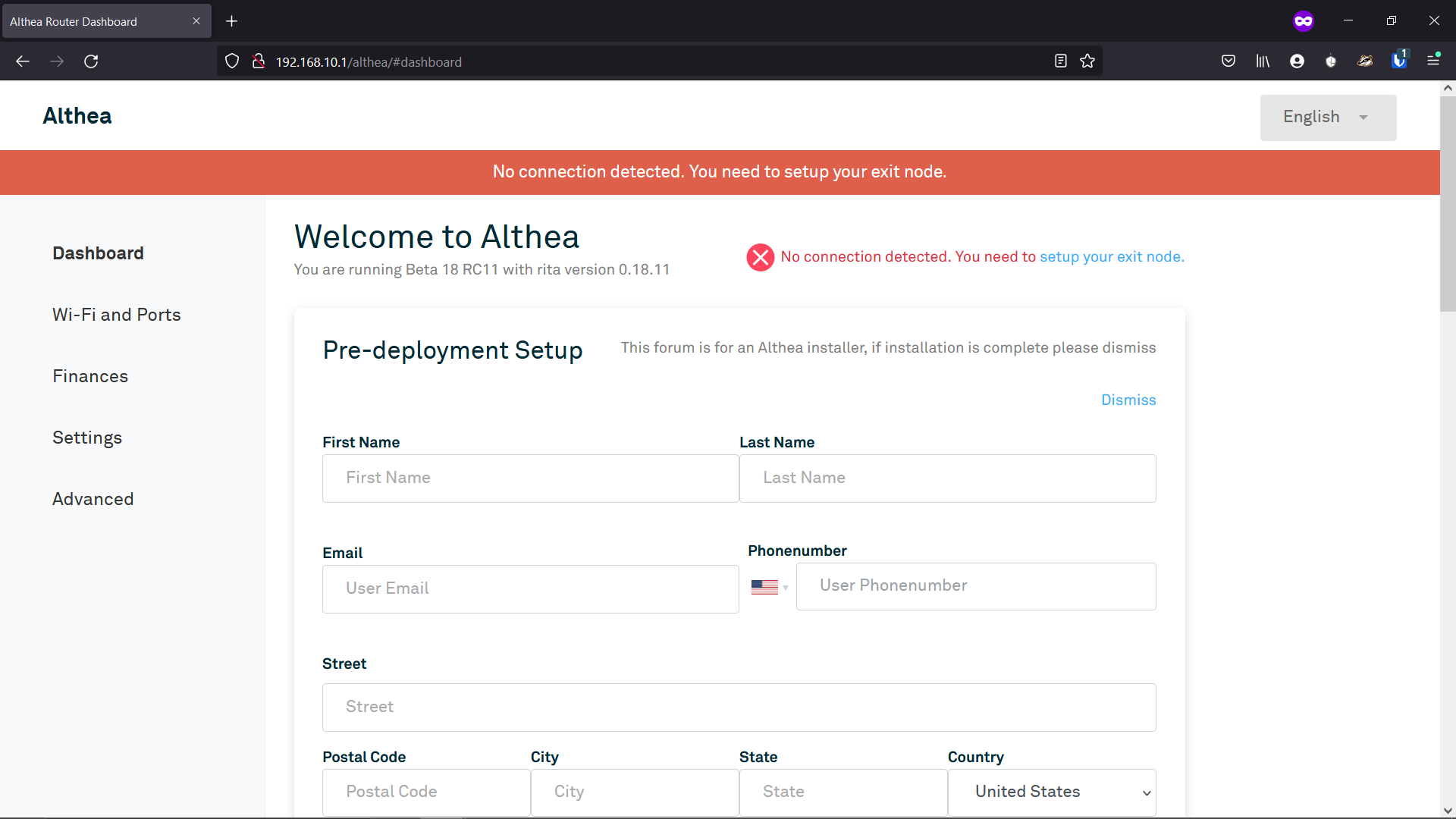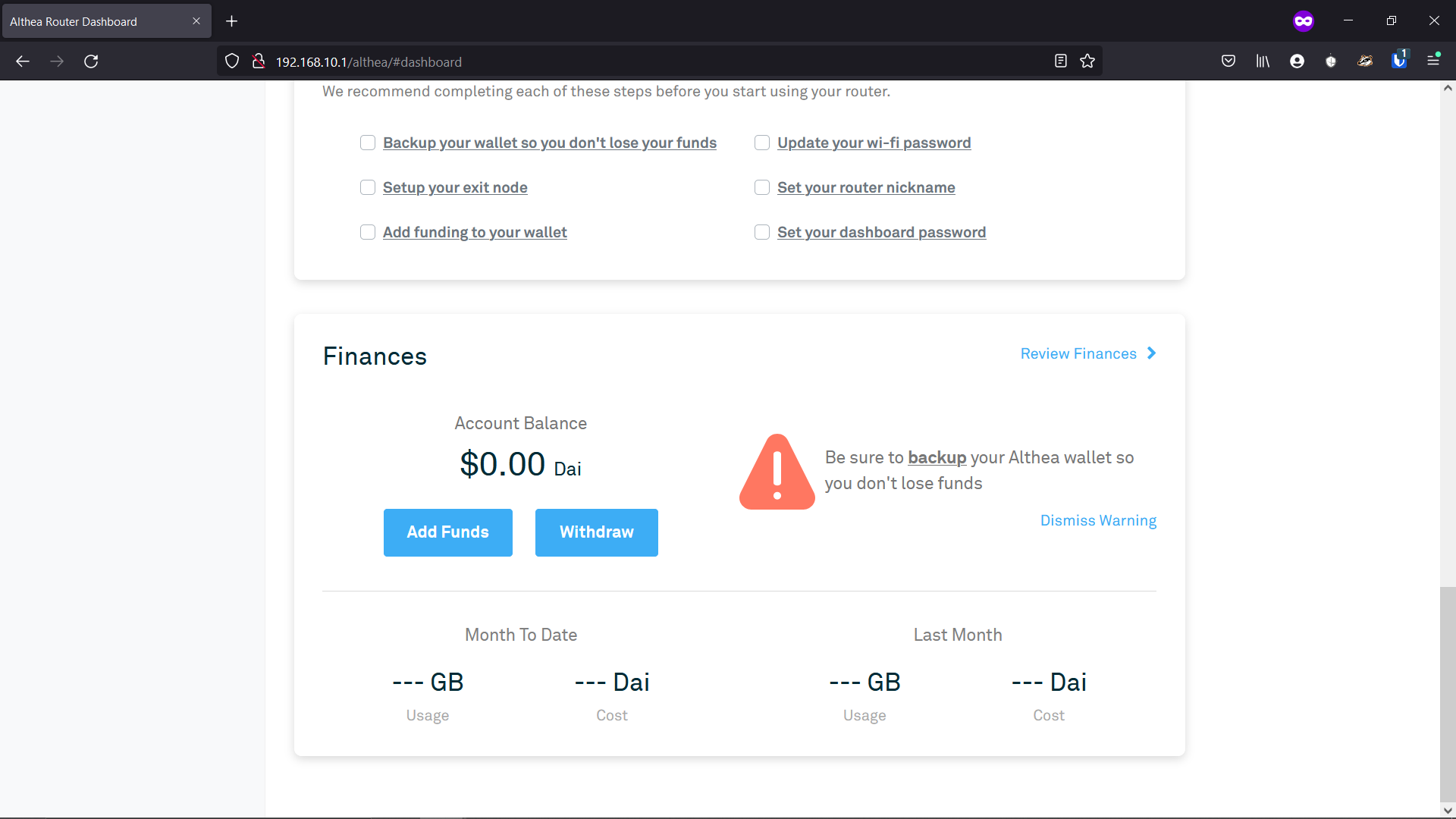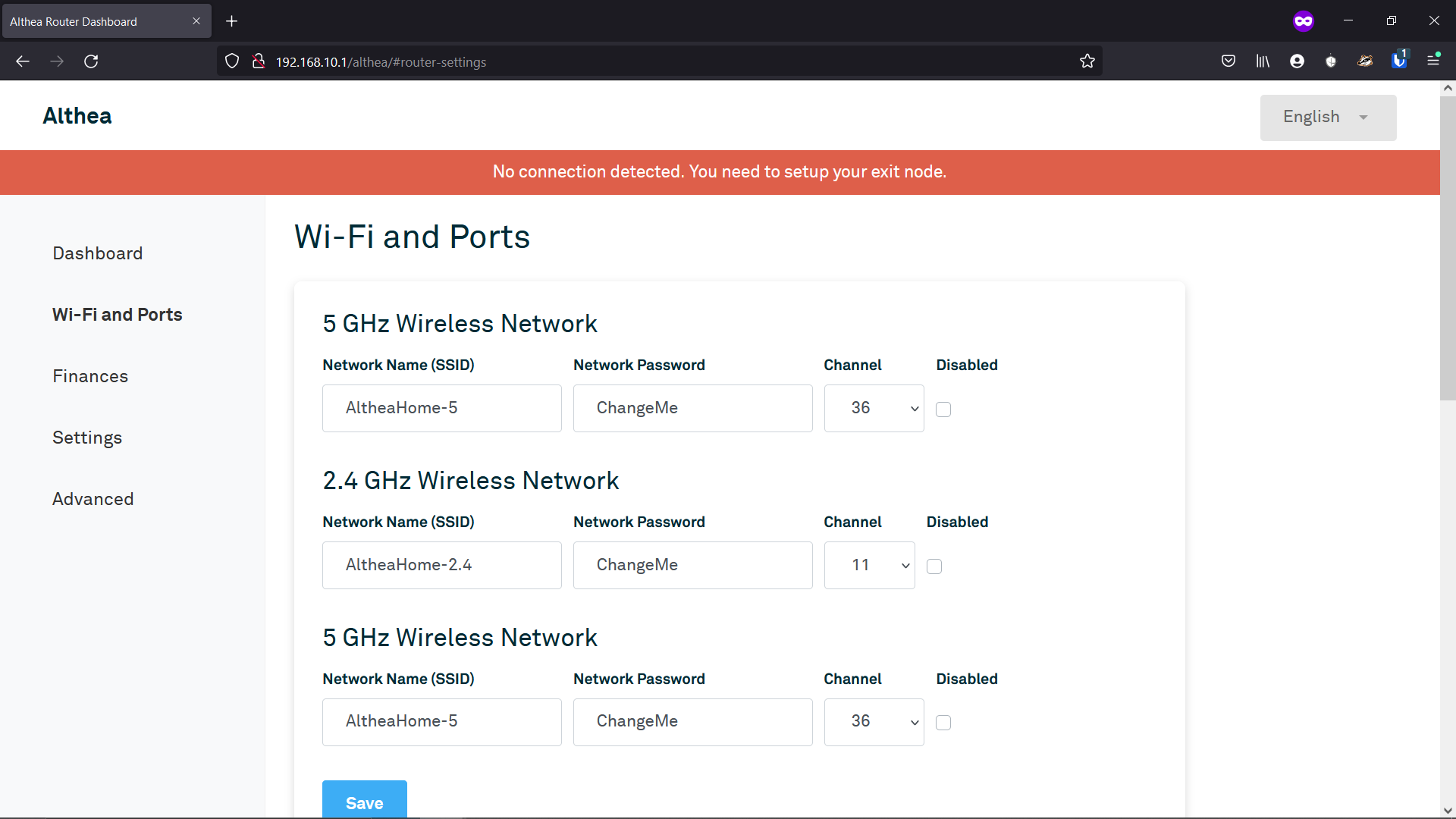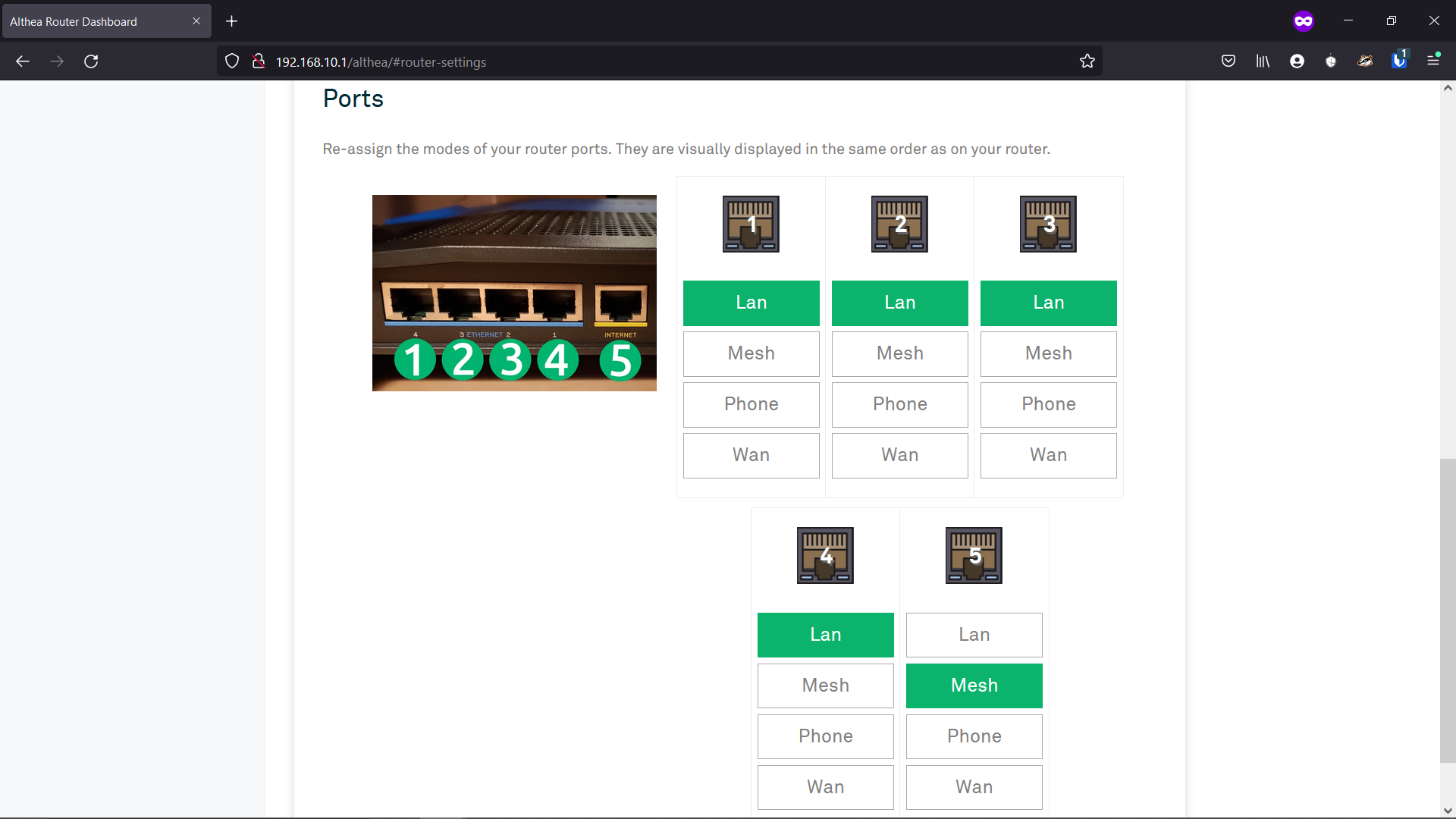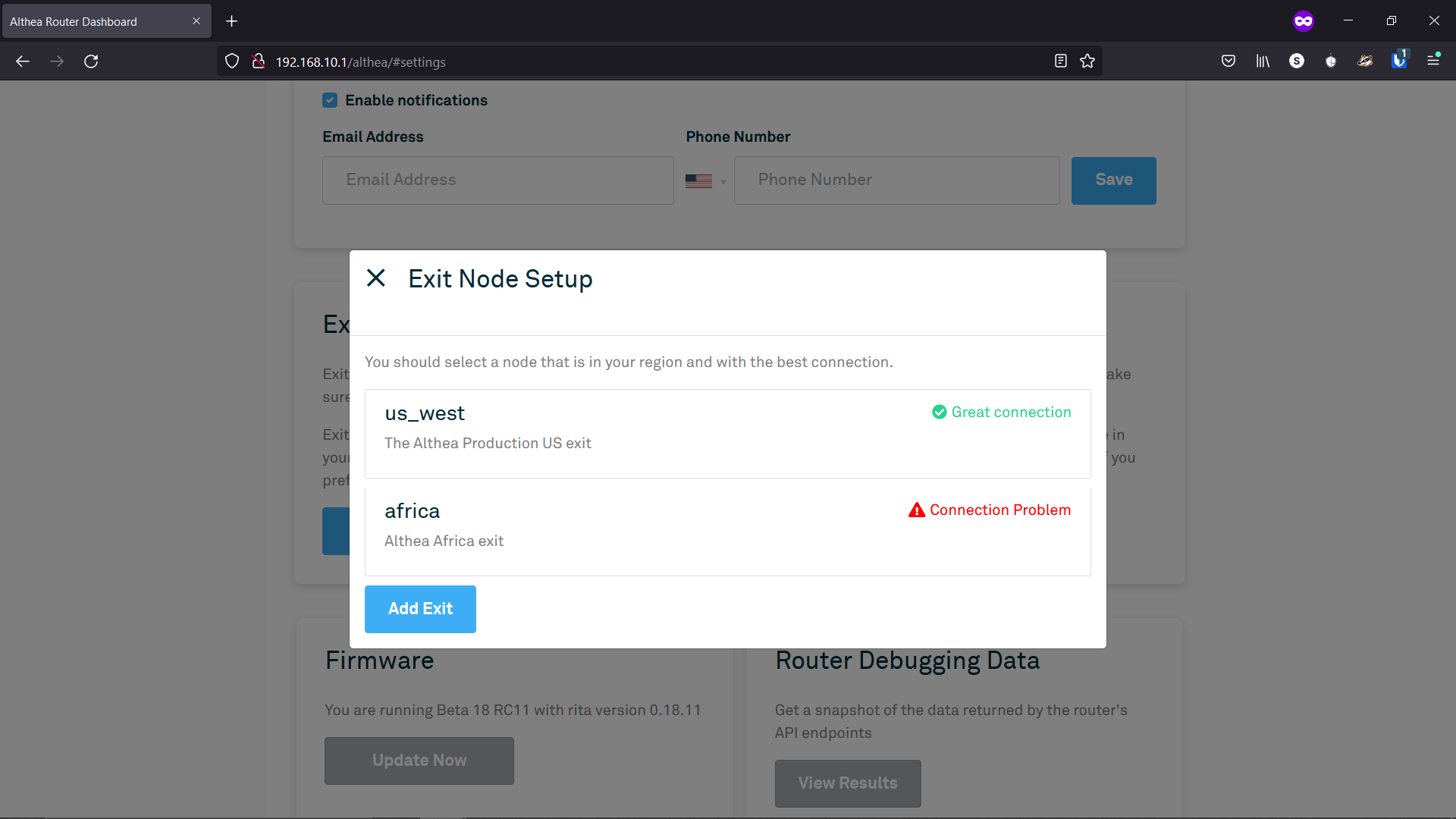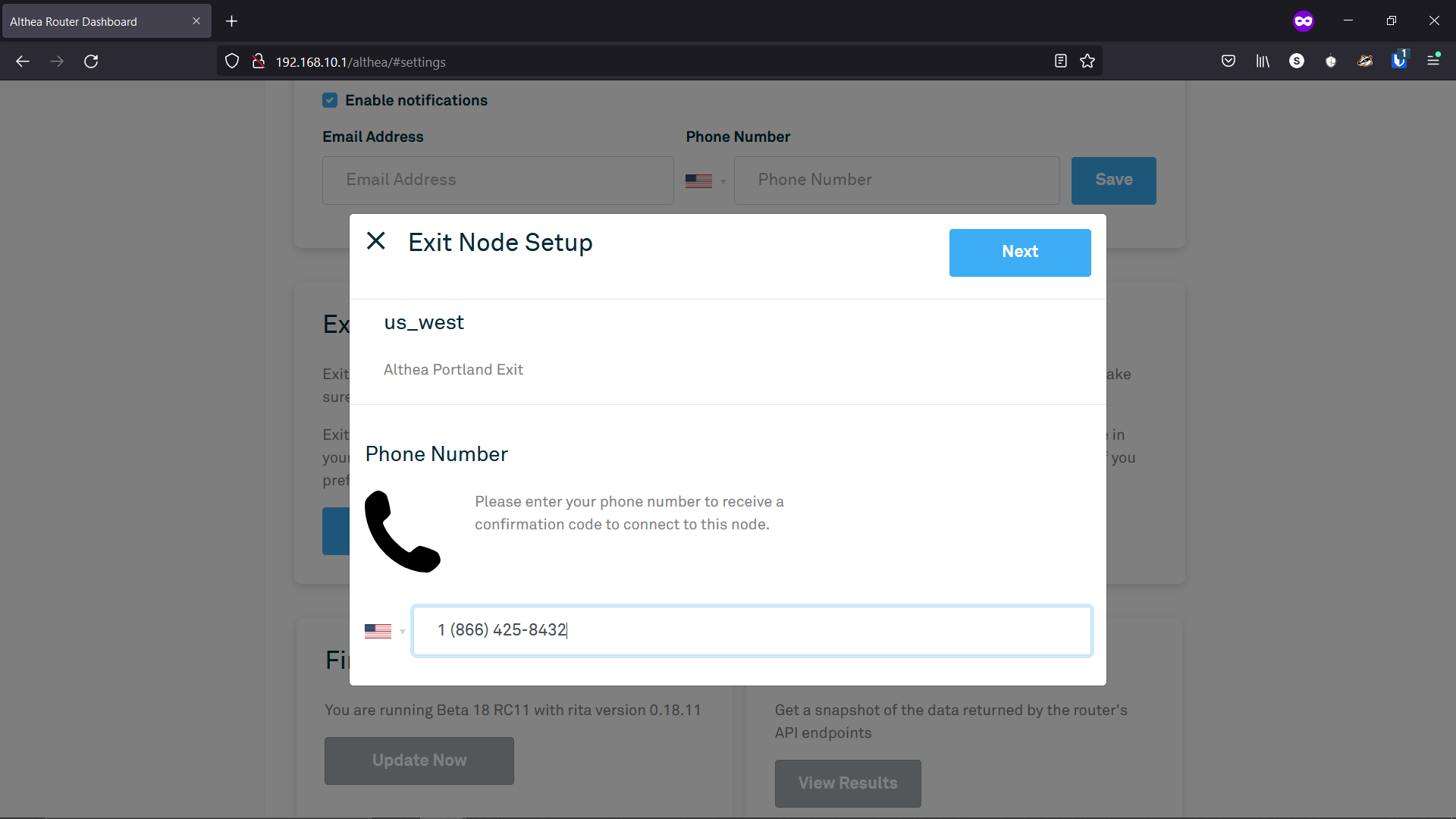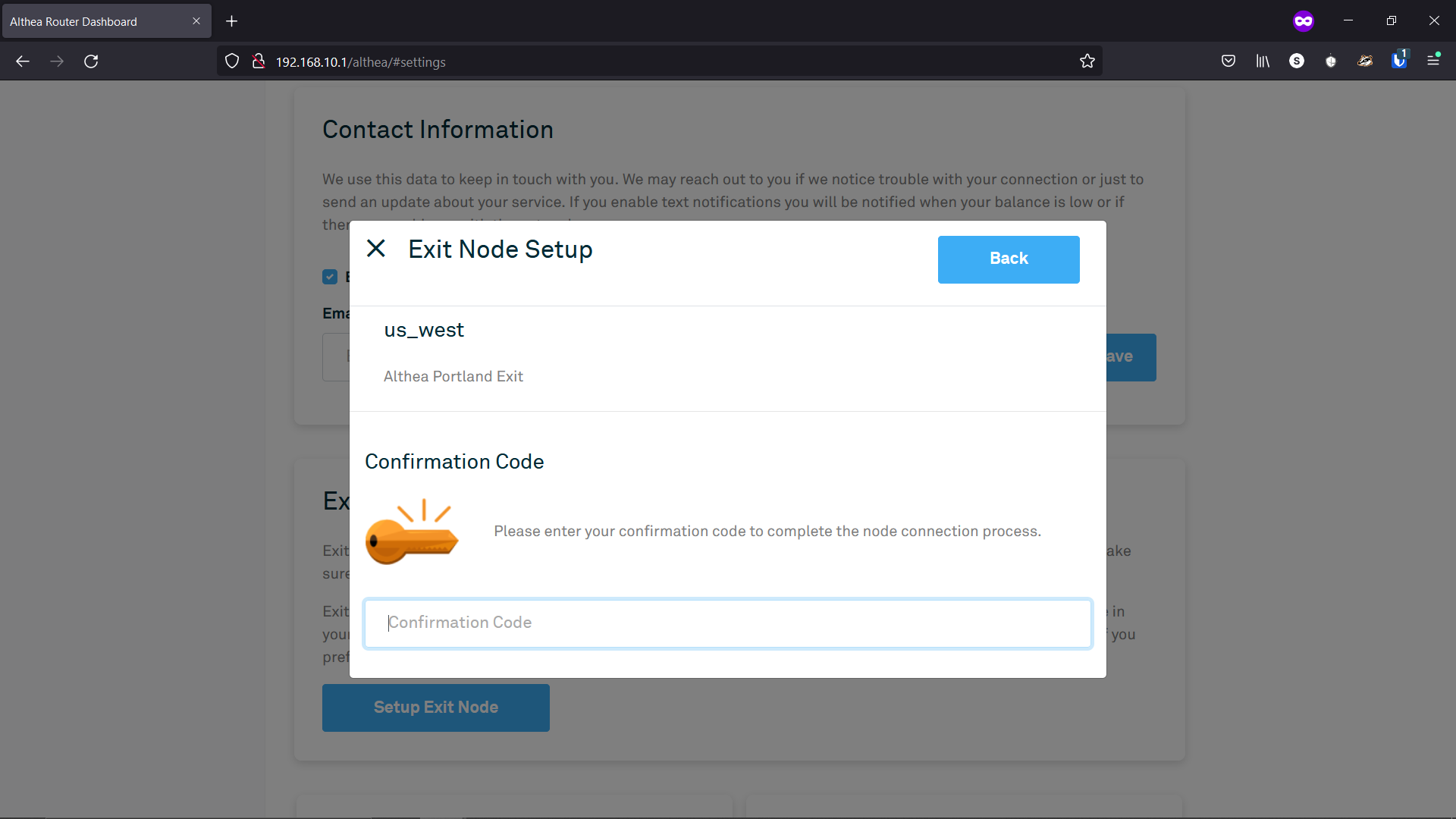Getting started with your Endpoint Router
This guide provides an overview for getting your endpoint router online, starting after the firmware has been installed. Endpoint routers are typically used to connect end users to the service, but in some cases they can also be deployed for other purposes, such as remote monitoring of a site, IoT deployments, etc. If you have purchased a router from Althea directly, the firmware comes preinstalled. If you have purchased your own router, please consult the flashing guide to first install the required firmware.
Accessing the Althea Router Dashboard
To set up your new router to function as an endpoint in your network, you will first need to connect to the device and pull up the Althea Router Dashboard. This may be done with a wired or a wireless connection.
Wireless Connection
To wirelessly connect to the device’s management wifi, find the default WiFi name, AltheaHome-2.4 or AltheaHome-5, in your list of available networks. The password to connect to this Wi-Fi is “ChangeMe”.
Wired Connection
For a wired connection, you will need to plug one end of an ethernet cable into the LAN port of your router and the other into your computer. By default Althea locates the LAN port as the port physically furthest from the marked WAN port on the device. The WAN port is usually a different color or uses a globe symbol. If there is no marked WAN port, then the LAN port is the highest numbered port and the WAN port is the lowest.
Access Althea Router Dashboard
Once your device is connected to the router, navigate to 192.168.10.1 from a web browser. We strongly recommend using a private browser or incognito window to prevent any browser caching issues while setting up your router. Below is what you will see when you first pull up this page.
Update Default Settings
Althea router firmware settings default for an endpoint router and no details have to be changed in order for your network to run smoothly. The below directions are optional.
Update Wi-Fi Name and Password
- Navigate to the Wi-Fi and Ports page of the Althea Router Dashboard.
- Under Wi-Fi, you may change the Wi-Fi name / SSID. This is the name that will appear in the list of available networks when you connect a device to the Wi-Fi.
- Here you may also update your password. Any password may be used, but be sure to make a note of it as the router may need to be reset if this information is lost. You can also use Operator Tools to remotely reset Wi-Fi and Dashboard passwords for any router that is online.
- Save your changes. Note: changing these details will cause the router to reboot. You will need the new SSID and password to log back onto the Wi-Fi if you are using a wireless connection.
Update Port Modes
The default port settings do not need to be changed for an endpoint router.
Update Router Nickname
While it is not strictly necessary, we highly recommend that you give your endpoint router a new nickname. To do this, navigate to the Settings Page and update the router nickname. We recommend using the end user’s name, e.g. Jane Smith, or the role the router will play in your network, such as ‘Tower1 Monitoring’. If the router nickname is set BEFORE the router is registered to the exit node, then that router nickname will automatically populate as the card title in Operator Tools. Otherwise, you will need to manually set the router card title.
Connect to an Exit Node
- By now you have probably noticed a warning banner on your Althea Router Dashboard stating, “No connection detected. You need to set up your exit node.” To do this, navigate to the Settings page. Scroll down until you find the “Exit Node” section of this page.
- Click “Setup Exit Node”. The below pop-up will appear.
- An exit in Althea is a service that helps protect your privacy and safely deliver traffic to the outside world. It’s important to choose an exit that you trust. For users in the United States we suggest “US West” an exit operated by the Althea development team. Click on the exit you wish to sign up for.
- You will now be asked for a sign-up phone number (which can receive SMS messages). This is used as an anti-spam measure and to make sure that we can keep access to specific services like Netflix. It will only be used to notify you of exit information and will not be shared. If you are opposed to this you can use an exit server that does not require a phone number. It may take up to a minute for the SMS message to arrive.
- Next you will receive a 6 digit code via SMS. Enter it and press submit.
- Congratulations you have selected an Exit server! This will protect your personal information from local infrastructure providers. It may take a few seconds for the new exit connection to turn green.
